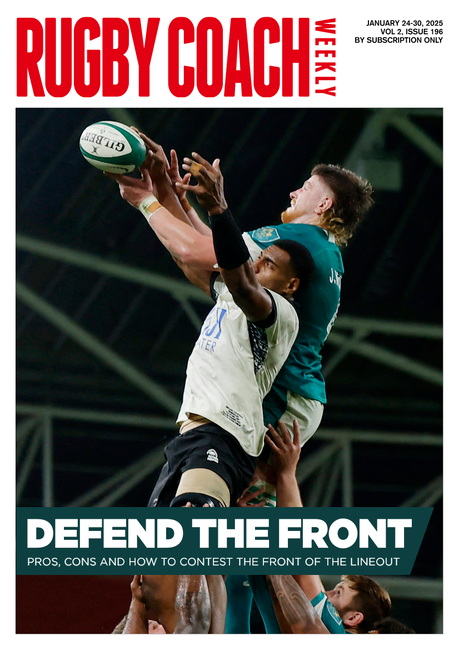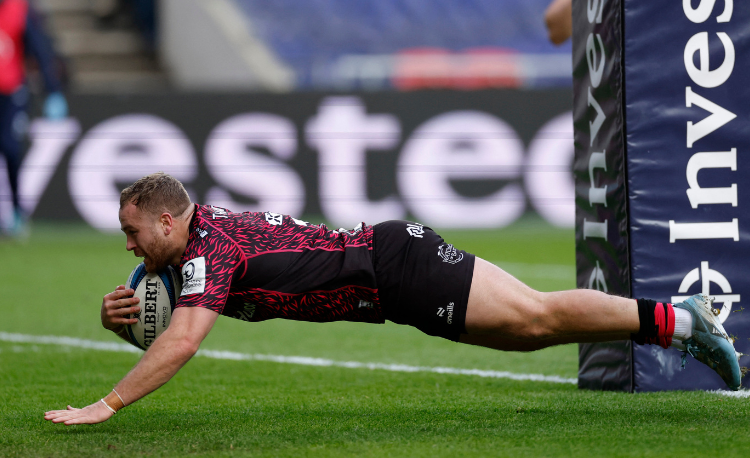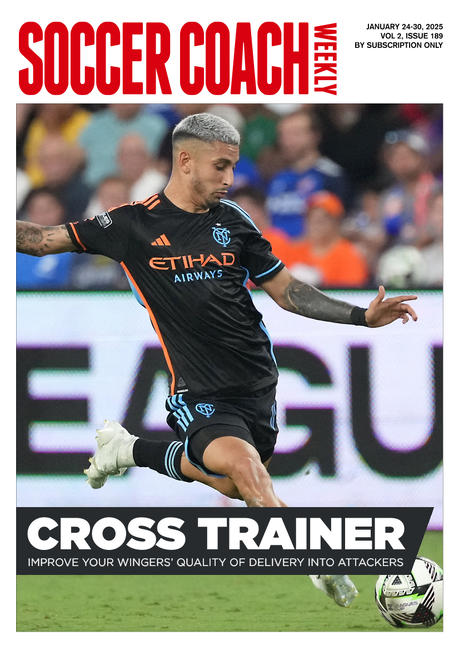Forwards' coaches love detail
RCW editor Dan Cottrell adds more context to two practices.
The best forwards’ coaches are often likened to nutty professors.
Absolutely embroiled in the detail of lineouts and scrums, they find even the most mundane technique exciting.
But their enthusiasm and understanding is all for nothing if their sessions are not interesting and engaging for the players.
Watch the best lineout coaches at work and you will see they are constantly looking for ways to make training as close to the game as possible.
When it comes to scrums, look at Mike Cron, who did so much with the All Blacks over the years and has since been poached by Australia.
This session, around winning the ball in wet-weather lineouts, that replicates the approaches of top-class, detail-oriented coaches, such as Cron.
Firstly, it focuses on a particular technique. If you were with them, they would be very keen that you were getting it completely right.
For example, when it comes to the lifters, it could be the initial body shape just before the actual lift. For the jumper, it might be the way the ball is delivered from the top of the throw.
I’ve found, when running sessions like these, that players can quickly relax their ’shape’ as they repeat the action.
Research tells us that they will lose interest once they think they’ve replicated the skill well enough times – and that can sometimes mean after only a couple of goes.
That’s why you need to use two coaching techniques.
First, you have to instil a culture of peer coaching – each player helping the others to improve.
The problem arises where two players are good friends and, instead of challenging each other, are happy to accept average outcomes. Mix up the pairings, or tell them straight that that’s not good enough.
Secondly, you should put the techniques into game-related situations, where players don’t know when next they will need them.
That means, when the chance occurs to use a technique, they will have very little thinking time to be ready to perform it. If they make mistakes, they will be motivated to train the technique harder when you split off again for the technical aspects.
Tips for the session
Strong position, before and after
Though the players are concentrating on a quick lift, they have to start and finish the lift properly.
That’s why the session focuses on the correct triangle shape between the two lifters.
Jumpers control the ball with their fingers
If the jumper thinks about fingertip control, they are more likely to spread their fingers and keep the hands “soft” to catch the ball. it’s then more likely to be a sympathetic pass “off-the-top” to the scrum half.
Scan and attack
Eamonn Hogan’s scanning exercise challenges the players to look at what’s in front of them in attack.
Having used this in training, I must say: Prepare yourself for failure.
That’s why you need to be ready to adjust the defensive starting points and give the attackers more chance to adjust their passes or running lines. But that depends on how hard you want to push your players.
Here’s how I’ve organised this session recently:
1. Touch rugby (10 minutes)
- Start with a game of touch rugby in a 20m area. Use eight players, each with a letter.
- Call out two letters. They are the defenders, and they start on the halfway line. Throw the ball to the attackers, who are spread out in their half of the box.
- They then play, with each attempt finishing when the ball carrier is touched in possession. Then, call out two more letters and start as soon as the defenders are in place.
- You can adjust the defensive numbers depending on the success rate of the attackers.
- You can have two games going on at once.
2. Simple passing (5 minutes)
- Break into a simple passing exercise, where a feeder passes to a group of three players. They have to run and pass, but in a short distance. For example, you can start with a 10m box, but then move to a 7m box and then a 5m box.
3. Back to touch rugby (5 minutes)
4. Eamonn’s scanning exercise (10 minutes)
Related Files
Newsletter Sign Up
Coaches Testimonials

Gerald Kearney, Downtown Las Vegas Soccer Club

Paul Butler, Florida, USA

Rick Shields, Springboro, USA

Tony Green, Pierrefonds Titans, Quebec, Canada
Subscribe Today
Be a more effective, more successful rugby coach
In a recent survey 89% of subscribers said Rugby Coach Weekly makes them more confident, 91% said Rugby Coach Weekly makes them a more effective coach and 93% said Rugby Coach Weekly makes them more inspired.
Get Weekly Inspiration
All the latest techniques and approaches
Rugby Coach Weekly offers proven and easy to use rugby drills, coaching sessions, practice plans, small-sided games, warm-ups, training tips and advice.
We've been at the cutting edge of rugby coaching since we launched in 2005, creating resources for the grassroots youth coach, following best practice from around the world and insights from the professional game.









